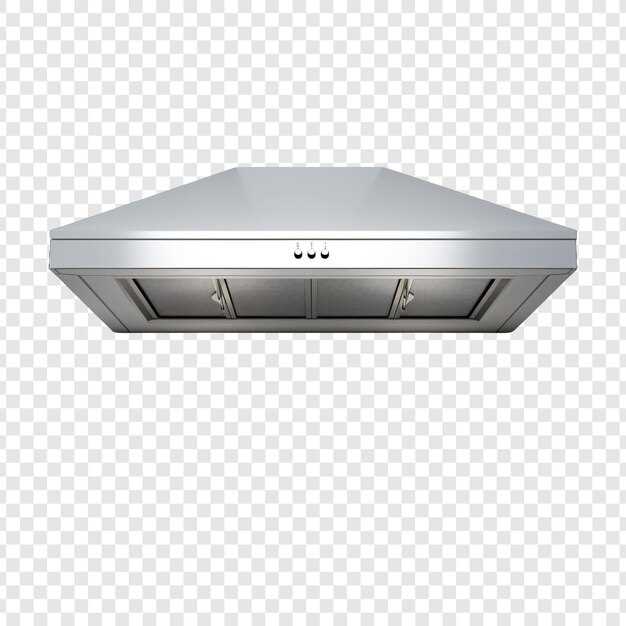
Should You Use Hood Vents for Cooling?
- George Harris
- 0
- Posted on

As homeowners seek efficient ways to manage indoor temperatures, the debate over cooling solutions intensifies. Among the various options available, hood vents have emerged as a noteworthy contender. These appliances are often associated with kitchen ventilation, but their potential for enhancing overall home cooling is gaining attention.
Hood vents function primarily to remove cooking heat and odors, but their design also allows for effective air circulation. By facilitating the expulsion of warm air from the home, they create a pressure differential that can draw in cooler air from outside. This can be particularly advantageous during warmer months when traditional air conditioning systems may be less efficient or cost-prohibitive.
However, homeowners must consider the practical implications of installing hood vents for cooling purposes. Factors such as installation costs, maintenance requirements, and overall energy efficiency play a crucial role in determining whether hood vents are a viable solution for improving home comfort. In this article, we will explore these factors in detail, assessing the benefits and drawbacks of hood vents as a strategic choice for home cooling.
Benefits of Hood Vents for Reducing Indoor Heat

Hood vents serve as an effective solution for managing indoor heat, particularly in kitchens and living spaces. One of the primary advantages is their ability to expel hot air directly outside, preventing it from circulating and raising indoor temperatures. This is especially beneficial during cooking, where stoves can generate significant heat that contributes to overall humidity and warmth within a home.
Another key benefit of hood vents is their role in improving indoor air quality. By removing smoke, odors, and excess moisture from the air, they help maintain a more comfortable environment. Reducing humidity levels can also decrease the likelihood of mold growth, thereby promoting a healthier living space.
Moreover, hood vents can enhance the efficiency of cooling systems. When hot air is effectively vented outside, air conditioning units do not have to work as hard to maintain a comfortable temperature. This can lead to lower energy bills and extended lifespan of HVAC systems due to reduced operational strain.
In addition, hood vents can be combined with other ventilation strategies, such as ceiling fans or window openers, to create a more efficient airflow system. This synergy can stimulate better air circulation throughout the home, facilitating a more consistent and cooler indoor climate.
Finally, the aesthetic aspect of hood vents cannot be overlooked. Available in various designs and styles, they can complement kitchen decor while serving a functional purpose. This duality of style and practicality makes them an appealing choice for homeowners seeking to reduce indoor heat effectively.
Installation Considerations for Homeowners
When considering the installation of hood vents for home cooling, several factors must be taken into account to ensure optimal performance and efficiency. First, assess the existing architecture of your home. Hood vents are most effective when placed in areas where hot air accumulates, such as attics or upper floors. Proper placement can significantly enhance airflow and reduce indoor temperatures.
Ventilation System Compatibility: Evaluate your current ventilation system. Hood vents need to be compatible with your existing HVAC setup. If your home lacks a robust air movement system, adding a hood vent could lead to unbalanced airflow, potentially causing other issues such as pressure imbalances.
Consulting Professionals: It’s highly advisable to consult with a professional contractor or an HVAC specialist before installation. They can provide insights into the best type of hood vent for your home and ensure that it’s installed correctly. This step can help avoid common pitfalls and ensure that the vent operates as intended.
Permits and Regulations: Check local building codes and regulations before proceeding. Certain municipalities may require permits for the installation of hood vents. Ensuring compliance with these regulations is crucial to avoid fines or the need for costly retrofits later.
Cost vs. Benefit Analysis: Conduct a thorough cost vs. benefit analysis. While hood vents can provide significant cooling relief, the installation costs, including materials and labor, should be weighed against the potential energy savings and comfort improvements. Establishing a budget beforehand will help guide your decisions.
Maintenance Requirements: Lastly, consider the maintenance needs of the hood vent system. Regular cleaning and inspections are necessary to keep the vent functioning efficiently. Failure to maintain the system properly can lead to reduced performance and increased energy costs.
Comparing Hood Vents to Other Cooling Methods

Hood vents offer a unique approach to cooling by promoting air circulation and exhaust, primarily designed for kitchens. However, when comparing hood vents to alternative cooling methods, several key factors come into play, including efficiency, cost, and overall effectiveness.
One of the most common alternatives is central air conditioning. This method provides comprehensive cooling throughout an entire home but comes with higher installation and operating costs. Central air systems also consume more energy, making hood vents a potentially more economical choice for localized cooling needs.
Window air conditioning units are another popular option for homeowners. They are less expensive to install than central systems and can effectively cool individual rooms. However, window units can obstruct views and reduce natural light. In contrast, hood vents maintain visibility and can enhance the aesthetic of a kitchen or dining area.
Fans represent a third option. Ceiling fans and portable fans are cost-effective and energy-efficient, providing a breeze that can make rooms feel cooler. They work best in dry climates and are often used in conjunction with other cooling methods. While fans improve comfort by increasing air movement, they don’t lower indoor temperatures like air conditioning or effectively exhaust heat like hood vents do.
Evaporative coolers, or swamp coolers, are another alternative, especially in arid climates. They use water evaporation to cool air and are energy-efficient. However, their effectiveness declines in humid conditions, while hood vents can efficiently expel hot air regardless of humidity levels, making them versatile in different environments.
In summary, while hood vents serve a specific function of air extraction and circulation in cooking spaces, they can complement or, in some cases, replace other cooling methods, depending on the context. Their efficiency, lower cost of operation, and minimal impact on aesthetics make them an appealing solution for localized cooling, particularly in conjunction with existing HVAC systems or when used strategically. Choosing the right method ultimately depends on individual needs, climate considerations, and budget constraints.
